If horses exist in paradise — and what kind of paradise would it really be without any horses — we'd wager that the majority of them are cremellos. Unique and elegant with a pinch of inherent nobility to its appearance, the cremello horse undoubtedly stands out among its equine peers as a thing of beauty.
What is a Cremello Horse?
The cremello horse is a stunningly unique and rare equine, characterized by its pure cream-colored coat, its pink skin and blue, mesmerizing eyes. This cream colored horse often appear otherworldly, with their rosy pink skin and white mane and tail giving them an almost ethereal quality, reminiscent of a mythical unicorn.
The term "cremello" primarily refers to this specific color and appearance, but to be a true cremello, a horse must possess all these distinctive physical traits. The cremello horse color is different from a perlino horse and can range from pale white to a delicate pale gold, often shimmering in the sunlight, further adding to their allure.

What Do Cremello Horses Look Like?
Cremellos are known for their white mane and tail, rosy pink skin, and spectacular pale blue eyes. When among the more common dark-colored horse breeds, the cremello horsewill appear as a relatively bright white. But when surrounded by truly white albino horses, their coat will accurately appear more creamy in comparison. These horses are generally compact, lean, and extremely attractive. Furthermore, the cremello can be easily identified by its strong limbs, arched neck, laid-back shoulders, well-defined withers, and expressive face.
Are Cremello Horses Hard to Care For?
Because a cream horse isn't one particular breed, there are no health problems specifically tied to them. They will likely have whatever health issues typically affect whatever breed they come from. The standards of care for a cremello horse are no lower than those of a Clydesdale, a Shetland, or a Palomino. You still need to make sure your horse is on a proper diet and fully vaccinated. You should also follow all standard management practices to keep your horse as healthy as possible.
Do Cremello Horses Sunburn?
Light-colored horses, such as grays, Appaloosas, Paints, Pintos, and horses with bald faces are often susceptible to sunburn. Just as you have likely experienced, prolonged exposure to the sun without protection can lead to varying degrees of sunburn. A sunburn typically occurs on the muzzle and potentially around the eyes. Cremello and albino horses often get sunburned in other areas as well. Like sunburns on humans, the skin may blister or peel, turn red, and become sensitive to touch.
Common Horse Breeds with Cremello Coloring
The breeds most commonly used for creating cremellos include Quarter Horses, Shetland ponies, draft horses, and Saddlebreds. This is because all of these horses are "chestnuts," which carry the gene needed to create a cremello horse (often called "the cream gene").

Quarter Horse
The American Quarter Horse holds its spot as one of the oldest and most popular horse breeds in North America. This breed's reputation likely stems from its many positive qualities, including but not limited to:
- Gentle nature
- Versatility
- Beauty
- Speed
- Agility
- Loyalty
A cremello quarter horse is suitable for riders and owners of all levels, as they tend to be easy to train and friendly with people. The Quarter Horse has been used in ranch work, racing, and it is even a popular family pet. Quarter Horses have a sturdy build and come in many colors, with brownish-red being the most common.
Shetland Horse
If you learned to ride a horse as a kid, there's a relatively high chance that you started on the back of a Shetland pony. Strong and resilient creatures, farmers and various other labor workers use Shetland ponies to plow farmland and pull carts, among other jobs. While there's no disputing the cute factor of a tiny horse, don't be fooled. These hardy little equine friends are often capable of outworking even the largest draft horse.
Draft Horse
The draft horse (sometimes called a carthorse, workhorse, or heavy horse) is a large horse bred to do laborious tasks such as plowing and other farm labor. Draft breeds have varying characteristics, but all share a docile temperament, impressive patience, and truly magnificent strength. These features made them extremely capable workers that were nearly indispensable to several generations of pre-industrial farmers.

Saddlebreds
High-stepping and elegant, the American Saddlebred maintains its reputation as the ultimate show horse. Saddlebreds are a spectacle of glamour and elegance while simultaneously remaining an intense athletic competitor. This breed regularly competes in the four divisions of the show ring:
- Pleasure
- Fine Harness
- Five-Gaited
- Three-Gaited
Owners groom their horses to perfection because each division has its own "look" that competitors strive to achieve. Fine harness, show pleasure, and five-gaited horses are typically exhibited with full tails and manes. People often show five-gaited horses with trimmed or roached manes to accentuate the animals' fine, long necks.
How Much Do Cremello Horses Cost?
Cremellos are not only rare but in high demand. As expected, you will likely have to spend a pretty penny if you want to own one of these angelic equines. Still, the particular breed you have your eye on will determine the cremello's exact cost. For instance, a Quarter Horse filly could sell for as little as $2,700, while a Lusitano Mare could easily cost upwards of $18,000.
Other factors such as height, conformation, and pedigree may also influence the price of a cremello horse. To ensure that you receive a healthy animal, do your research and buy from a legitimate, reputable breeder.

Final Thoughts - Cremello Horse
The cremello horse may very well be one of the most gorgeous horses you will ever lay eyes on. Majestic blue eyes, an off-white coat, and rosy pink skin make for an elegant and graceful creature that bears a striking resemblance to the beautiful steeds found in fairy tales. Underneath that creamy off-white coat, these beautiful creatures are just regular horses that require the same amount of care, love, and attention, if not more. You may have to pay a pretty penny for such a rare colored horse, but it's worth every last cent.

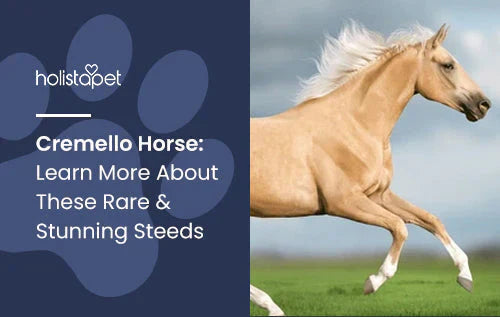
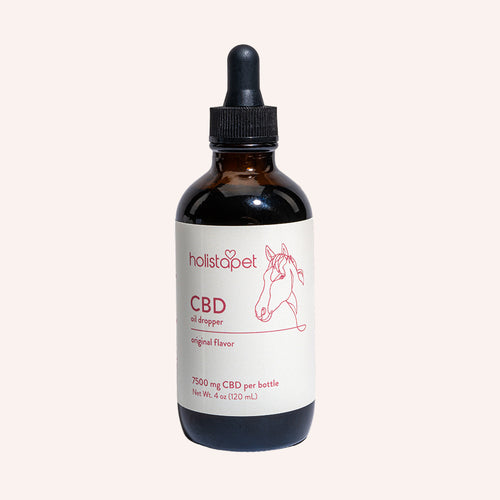 CBD Oil for Horses - Fast Acting
CBD Oil for Horses - Fast Acting
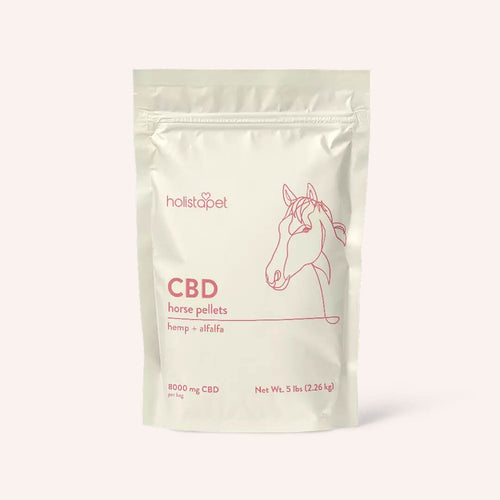 CBD Pellets for Horses - Easy Dose
CBD Pellets for Horses - Easy Dose
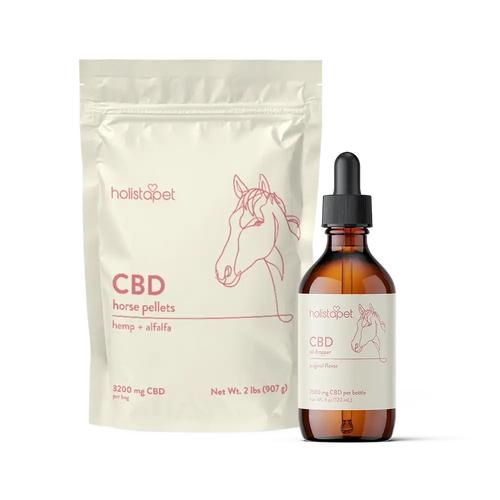 "Ridin' On My Horse" Bundle - Highly Rated
"Ridin' On My Horse" Bundle - Highly Rated



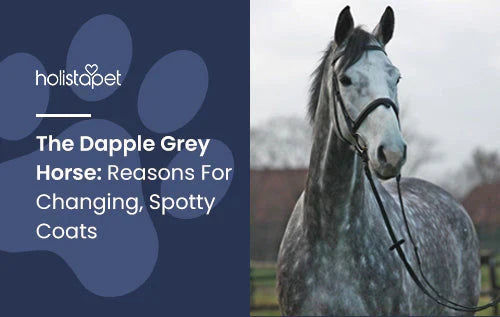

Leave a comment
All comments are moderated before being published.
This site is protected by hCaptcha and the hCaptcha Privacy Policy and Terms of Service apply.